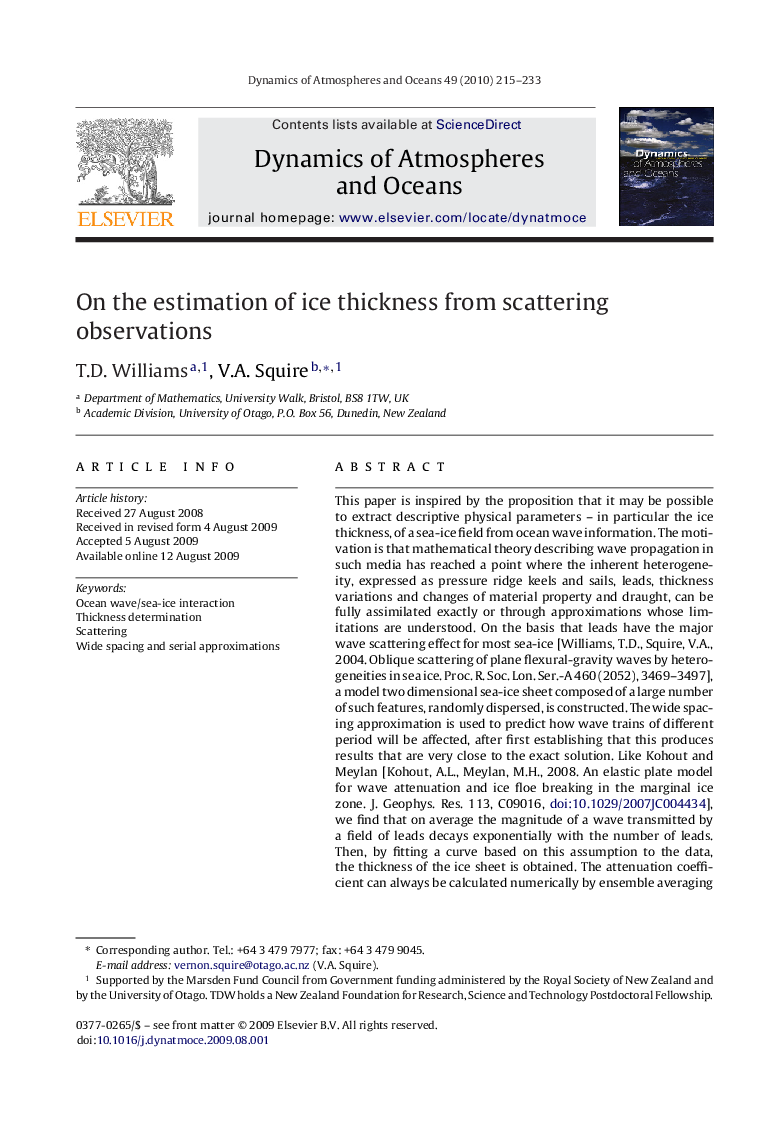| کد مقاله | کد نشریه | سال انتشار | مقاله انگلیسی | نسخه تمام متن |
|---|---|---|---|---|
| 4674144 | 1634242 | 2010 | 19 صفحه PDF | دانلود رایگان |

This paper is inspired by the proposition that it may be possible to extract descriptive physical parameters – in particular the ice thickness, of a sea-ice field from ocean wave information. The motivation is that mathematical theory describing wave propagation in such media has reached a point where the inherent heterogeneity, expressed as pressure ridge keels and sails, leads, thickness variations and changes of material property and draught, can be fully assimilated exactly or through approximations whose limitations are understood. On the basis that leads have the major wave scattering effect for most sea-ice [Williams, T.D., Squire, V.A., 2004. Oblique scattering of plane flexural-gravity waves by heterogeneities in sea ice. Proc. R. Soc. Lon. Ser.-A 460 (2052), 3469–3497], a model two dimensional sea-ice sheet composed of a large number of such features, randomly dispersed, is constructed. The wide spacing approximation is used to predict how wave trains of different period will be affected, after first establishing that this produces results that are very close to the exact solution. Like Kohout and Meylan [Kohout, A.L., Meylan, M.H., 2008. An elastic plate model for wave attenuation and ice floe breaking in the marginal ice zone. J. Geophys. Res. 113, C09016, doi:10.1029/2007JC004434], we find that on average the magnitude of a wave transmitted by a field of leads decays exponentially with the number of leads. Then, by fitting a curve based on this assumption to the data, the thickness of the ice sheet is obtained. The attenuation coefficient can always be calculated numerically by ensemble averaging but in some cases more rapidly computed approximations work extremely well. Moreover, it is found that the underlying thickness can be determined to good accuracy by the method as long as Archimedean draught is correctly provided for, suggesting that waves can indeed be effective as a remote sensing agent to measure ice thickness in areas where pressure ridges are not sizeable, i.e. away from coastal regions of high deformation.
Journal: Dynamics of Atmospheres and Oceans - Volume 49, Issues 2–3, April 2010, Pages 215–233